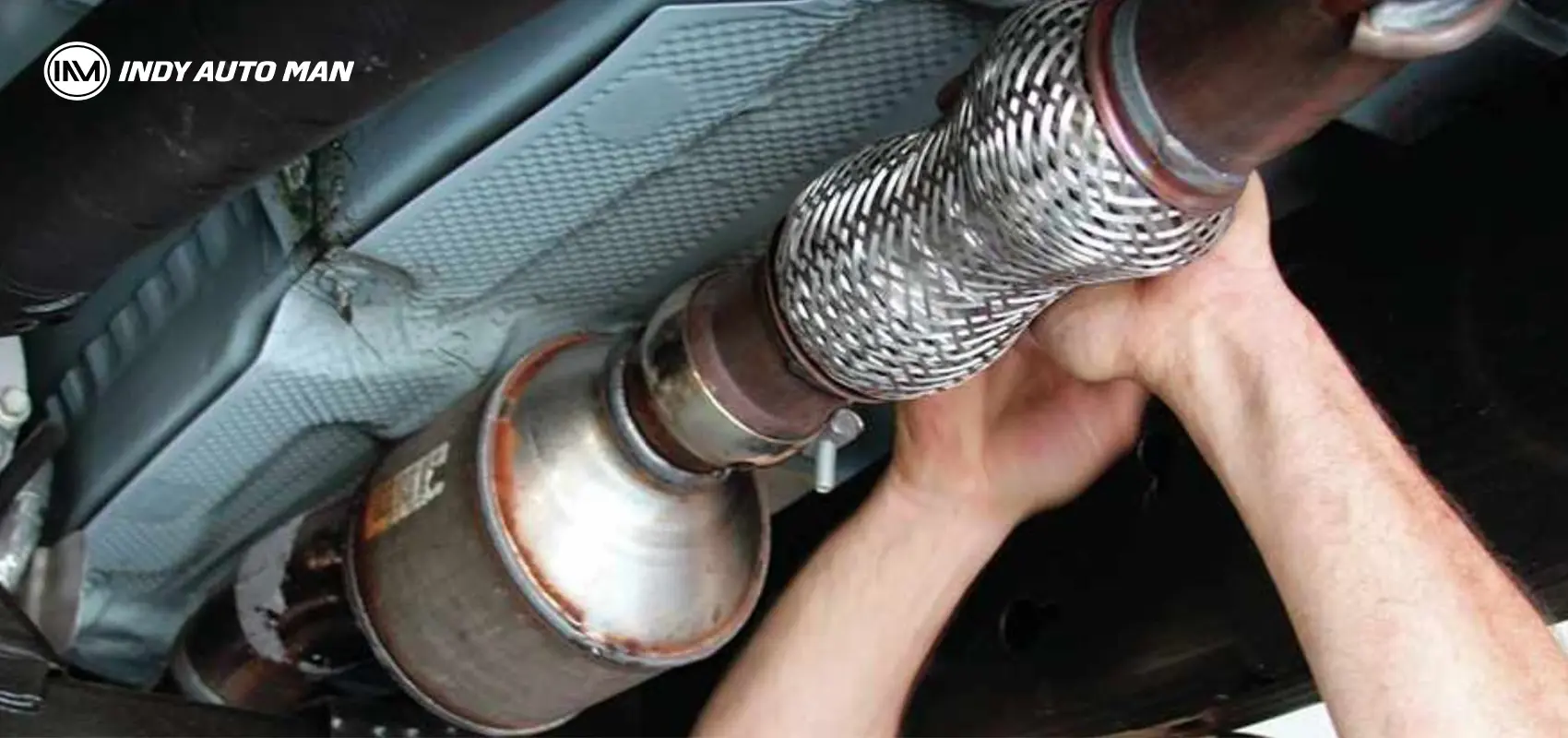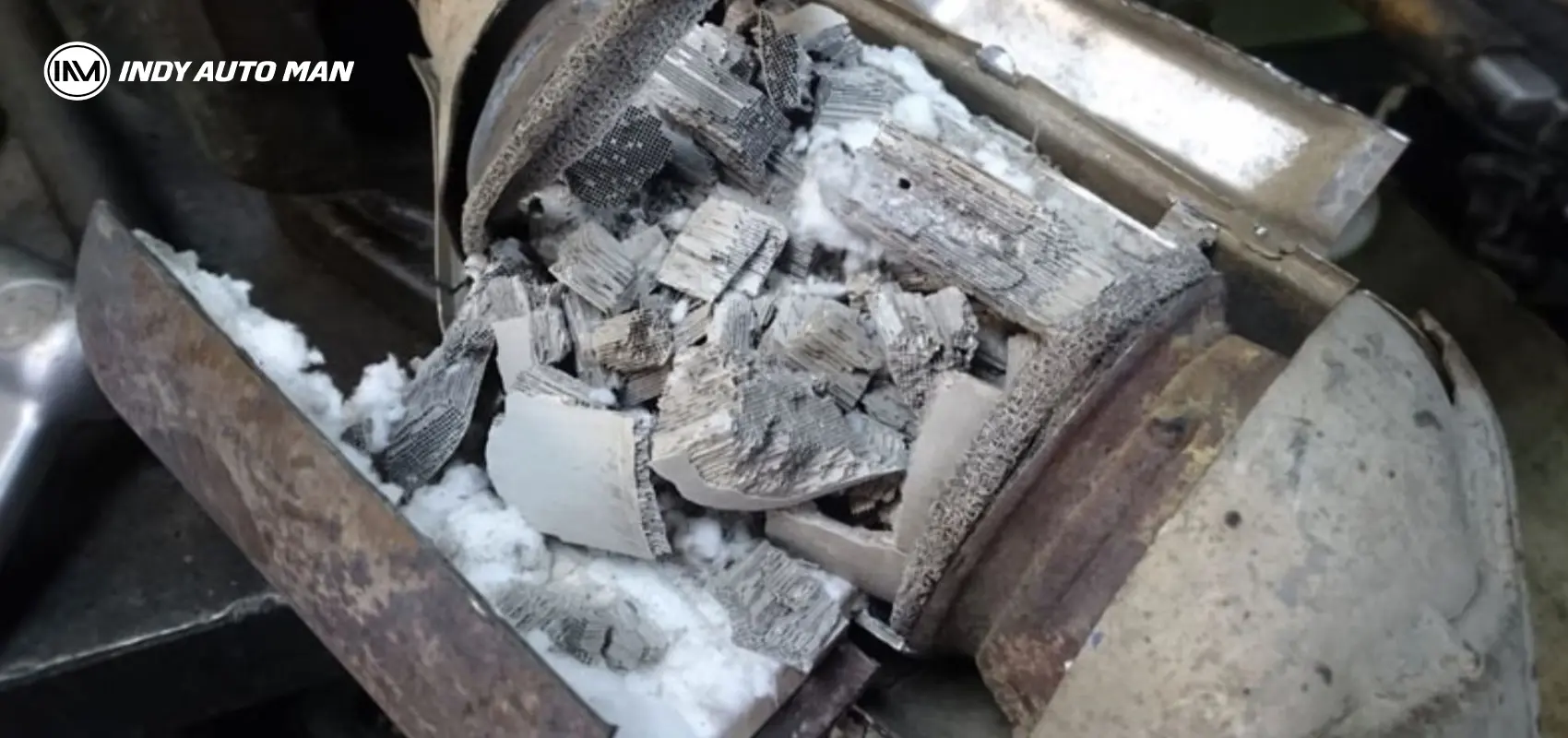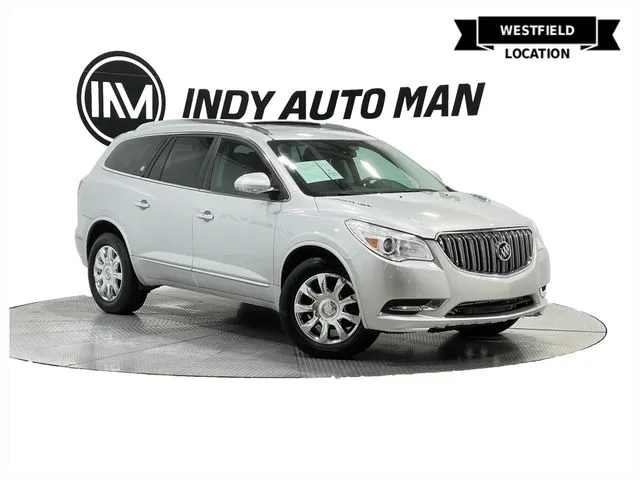Catalytic Converter: Principles of Work, Maintenance, Failures

A car has a catalytic converter in its exhaust system, which may fail due to low-quality fuel. Indiana dealer Indy Auto Man offers professional maintenance and an extended catalytic converter service package that includes protection if it is stolen in Indiana.
Let's figure out how a catalyst converter works, and what to do in case of a blockage.
What Is a Catalytic Converter For?
The main task of the catalyst is to clean harmful exhaust. Chemical reactions occur during its operation: hazardous substances transform into safe forms. The exhaust gases become cleaner, and the car causes less harm to the environment.
The converter only works after heating to 572°F; cleaning does not occur immediately after starting the engine.
Catalytic Converter Device
The basis of the catalyst is a ceramic or metal honeycomb. Depending on the model, a microlayer of highly chemically reactive palladium and rhodium or iridium is applied to the walls of the honeycomb. Touching the spray, part of the exhaust enters into a chemical reaction, and some elements formed during fuel combustion are bound.
Modern catalysts have three components:
- The first element binds nitrogen oxides.
- The second one removes some of the unburnt fuel particles - most of the carbon monoxide.
- The third element is the sensor, which analyzes the gases leaving the catalyst and transmits the data to the onboard computer.
Do All Cars Have a Catalytic Converter?
All vehicles made after 1974 must have catalytic converters to make pollutants less harmful before leaving the exhaust system.
Catalyst Malfunctions and Their Causes

Manufacturers write that the service life of the neutralizer is 60–90 thousand miles. But in practice, problems can arise even with vehicles with less mileage, especially in large cities like Indianapolis, where you often get stuck in traffic jams.
The catalytic converter can be replaced every 3–7 years, depending on the operating conditions.
The most frequent cause of the malfunction is the burnout of the layer of metals covering the honeycombs - a natural process that deteriorates the quality of the exhaust. The onboard computer shows a lit “check” and, in some cases, does not allow the engine to work, turning off the ignition.
Low-quality fuel also accelerates the burnout process. Often, the octane number of gasoline is increased by adding lead. This adds the load on the catalyst, reducing its service life. Owners can accelerate failure in an engine with diesel fuel, using anti-gel additives in winter.
In some cases, the cause of the breakdown may be a faulty engine. If the ignition is incorrectly set and there are problems in the power system (the latter is especially true for diesel engines), the burnout of the catalytic layer accelerates.
Diagnostics of a Car Catalyst
You can determine a malfunction by several signs:
- The “Check Engine” light on the instrument panel. It turns on if there are any engine errors. Diagnostics with a scanner can accurately determine that the cause is in the catalyst.
- Reduced engine power. If the catalyst is faulty, the car starts to stall, twitch, and accelerate worse. The reason is a decrease in the throughput of the catalytic converter associated with the partial destruction of the honeycombs: they bake and clog the passage for exhaust gases. As a result, the engine suffocates.
- Rumbling under the bottom. Usually appears at high speeds, occasionally immediately after startup. The fallen particles begin to beat against the walls of the catalyst under the influence of gas flow and centrifugal forces.
- Insufficiently strong or even pressure of gases from the muffler. If the neutralizer is working properly, you can feel a slight pulsation when you put your hand near the exhaust pipe; it occurs due to the alternating operation of the exhaust valves. If the flow is smooth or weakened, the problem is likely in the destroyed catalyst honeycombs.
The catalytic converter does not fail abruptly and unexpectedly. Usually, before failure, minor problems from the list above begin.
Original or Analogue
The original catalyst is expensive but helps the car retain all engine operating modes. This has a positive effect on the environment and prolongs the service life of the motor. Unfortunately, rare metals inside a catalytic converter make it a frequent target of thieves in Indiana. At Indy Auto Man, we offer proper car maintenance and additional protection coverage to guarantee your peace of mind.
How Much Is a Catalytic Converter Worth?
Catalytic converter price ranges from $500 to $2200. Due to the high price, some car enthusiasts are looking for an alternative.
All methods for replacing the catalyst described below are for informational purposes only. We do not recommend using these methods on your own!
There are several options:
- universal catalyst;
- flame arrester.
A universal catalyst means two groups of parts at once. The first is a catalyst suitable for any car. It is quite expensive but works flawlessly. The second option is a block with honeycombs. In this case, new honeycombs are installed in the old catalyst. The disadvantage of this option is that it is difficult to choose a service for repairs; not everyone will undertake such work. The service life of a universal neutralizer is 30–50 thousand miles.
A cheaper and more common method is a flame arrester. It can be ready-made and intended for installation instead of a catalyst. Another option is to install a flame arrester directly into the neutralizer body. This method is somewhat more complicated.
Sometimes, car enthusiasts knock the honeycomb out of the housing. The method is cheap but can lead to increased noise levels and environmental damage which can turn into high penalties.
Conclusion
If problems arise with the catalyst, it must be replaced by a qualified auto mechanics. The optimal solution would be to install an original neutralizer. All analogs and dupes can lead to accelerated engine failure, make it impossible to obtain a diagnostic card and create an additional burden on the environment.
Schedule your visit to the Indy Auto Man service station for diagnostics and all necessary maintenance or repairs at a good price!










